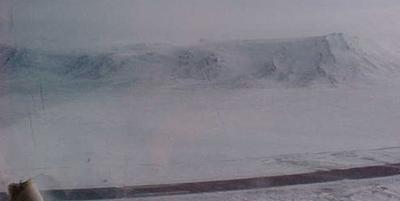1 April, 2001
Tidbit of History
During World War I (U.S. involvement spanning 1916-1918), there were 290
active lifeboat stations. In addition, fifteen cruising cutters
patrolled off the coast. Overseas, six cutters patrolled between
Gibraltar and England. Near the end of the war, the Tampa was
presumably struck by a torpedo and was lost with all hands. During this
war the Coast Guard had a higher percentage of personnel killed in
action than any other service. It was in this same period that Coast
Guard aviation was born. Lieutenant E. F. Stone, USCG, one of several
early Coast Guard flyers, was copilot on the Navy NC-4 flying the first
aircraft to cross the Atlantic.
After the war the job of enforcing the Eighteenth Amendment or Volstead
(Prohibition) at sea was given to the Coast Guard. This anti-smuggling
duty required considerable growth in numbers of both ships and
aircraft. Prior to WWI, extensive scouting flights had met with such
success that Congress had authorized the establishment of ten Coast
Guard air stations. The war stopped this development, but because of
the high priority of the Volstead Act, the growth of aviation continued.
Daily Update
Saturday at midnight was the advancing of the clocks for Daylight
Savings time.
I began the day by completing my packing and preparing to leave the
ship. I got all my bags to the hanger before lunch. The morning was
spent doing miscellaneous tasks. After lunch, we prepared for departure.
Lots of hugs and pictures were taken. We dressed in our flight suits
and headed for the helo. I wore light clothes under the suit due to the
fact that we would be changing out of our flight gear on the
helicopter. It was extremely windy and the helo's won't fly (unless
it's an emergency) it the winds are greater than 40 knots. We were
bordering on that wind speed. The ship was repositioned and stopped in
preparation for our departure. Two helos left within fifteen minutes
of each other.
The flight over to St. Lawrence Island was beautiful. It was sunny and
clear. The ice had several open areas where the ice had moved due to
the current and wind. As we looked in the distance, a beautiful
mountain was in view containing a small spit to the left of the
mountain. Many houses lined the area. When we arrived on the island,
four wheelers and snow machines greeted us. They arrived from all
angles, as there are no roads. In fact, the second helo had to dodge a
few four wheelers near the runway. One of the teachers and the
principal came to welcome us. The principal had a trailer attached to
the back of his four wheeler, which worked nice for carrying our bags.
We had a brisk ride on the back of the four wheelers to the school where
we put together our plans for the remainder of the day. After visiting
and warming up with a cup of coffee, Gay left in search of room
accommodations.
The house belongs to the former mayor's granddaughter. It is complete
with heat, running water, electricity, and a phone. What more could
anyone need! The house was built during W.W.II and the weather bureau
was originally stationed in the house. During W.W.II Russia was the
ally and they were fighting on the eastern front. American planes would
fly to Fairbanks and then over to Russia. The house was used to help
determine the weather. It was important to have someone out on the
spit that could stay abreast to weather conditions.
Many of the teachers live together in the old school. This was a neat
concept. It lends a whole new meaning to the idea children have that
the teacher lives at school! Instead of classrooms, each room has been
converted into an apartment. One of the teachers invited us to dinner.
We were introduced to many teachers in the building and treated to a
wonderful salmon dinner prepared by two of the teachers. After a time
of visiting, we headed back to our house. The sunset at 11:00 p.m. was
beautiful over the ocean. I didn't have my camera with me
unfortunately.
It is very cold here. I was told that it was -45 or so. It felt much
colder than that to me. It definitely was the coldest day I have
experienced so far. The main difference in temperature between here and
the ship was the extreme winds. It was really cool on the four
wheelers.
After a little visiting, we settled down for the night.

Arriving in Gambell.

Greeting from St. Lawrence Island. We arrived by helicopter.
Contact the TEA in the field at
.
If you cannot connect through your browser, copy the
TEA's e-mail address in the "To:" line of
your favorite e-mail package.
|
